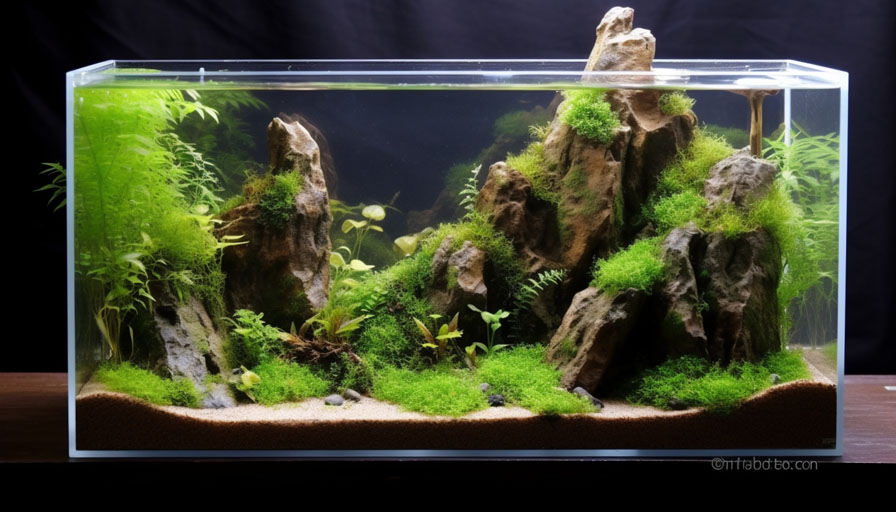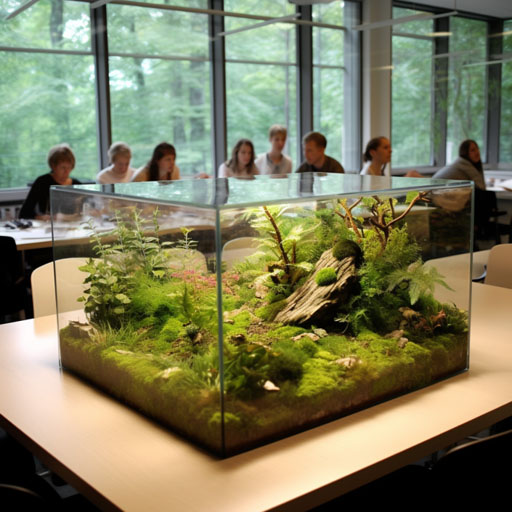Creating terrarium and paludarium designs primarily involves a combination of artistic and horticultural skills. AI can assist with certain elements of the design process, such as plant selection or layout, but it is not typically used to design these miniature ecosystems entirely. Here are some ways AI can be used in terrarium and paludarium design:



- Plant Selection: AI can help identify and recommend suitable plant species based on factors like light, humidity, and temperature requirements. Some AI apps and platforms can provide information on which plants will thrive in the chosen environment.
- Plant Growth Predictions: AI can assist in predicting how plants will grow and fill out the terrarium or paludarium over time. This can help with spacing and arrangement decisions.
- Environmental Monitoring: AI-powered sensors and systems can be integrated into the setup to monitor environmental conditions such as temperature, humidity, and light. These systems can provide real-time data and even make adjustments to maintain optimal conditions for plant health.
- Augmented Reality (AR) or Virtual Reality (VR) Visualization: AI can be used to create AR or VR simulations of the terrarium or paludarium design. This allows designers and enthusiasts to virtually explore and fine-tune their designs before implementing them physically.
- 3D Modeling and Rendering: AI-assisted 3D modeling and rendering software can help you visualize your terrarium or paludarium design in great detail before you start building. This can help with planning the layout and overall aesthetics.
- Automated Maintenance: Some AI-powered systems can automate tasks such as watering, temperature control, and lighting, making it easier to maintain your miniature ecosystem.
- Plant Disease Detection: AI can be used to detect signs of plant diseases early, which is crucial for maintaining a healthy terrarium or paludarium. AI-powered image recognition systems can identify issues in plant health.
- Inspiration and Design Ideas: AI can help generate design ideas and suggestions based on your preferences and the available space. It can analyze existing designs and provide recommendations for creating unique and visually appealing terrariums and paludariums.



While AI can assist in various aspects of terrarium and paludarium design, it’s important to note that the creativity, artistic vision, and hands-on skills of the designer are still crucial in creating a successful and aesthetically pleasing ecosystem. AI can be a valuable tool to streamline certain tasks and provide recommendations, but it doesn’t replace the expertise and personal touch of the designer.

A Paludarium is a type of vivarium that combines elements of a glass tank and an aquarium. It is a carefully designed cage that provides both terrestrial and aquatic environments. It is generally home to a wide variety of plants and animals. The word “paludarium” comes from the Latin words “palus” meaning swamp and “arium” meaning place for
In the paludarium you will find an aquatic section, which usually has aquatic plants and fish. Coupled with dry areas or ground This may include plants. reptile amphibian or other small animals The design allows both aquatic and terrestrial ecosystems to coexist. This makes for a visually appealing and ecologically interesting exhibition.
Paludariums are popular among hobbyists interested in creating unique and dynamic environments. which can support a wide variety of plant and animal life They require careful planning and maintenance to ensure the well-being of the species within the enclosure and to maintain a balance between aquatic and terrestrial elements.
These settings can be tailored to specific needs. and can support a wide variety of plants and animals From tropical rainforest plants to frogs, turtles and even small reptiles. Building and maintaining a paludarium is a worthwhile and innovative endeavor for those with an interest in both aquatic and terrestrial ecosystems.


You can learn more Terrarium and Paludarium Prompts Here
Link :>

